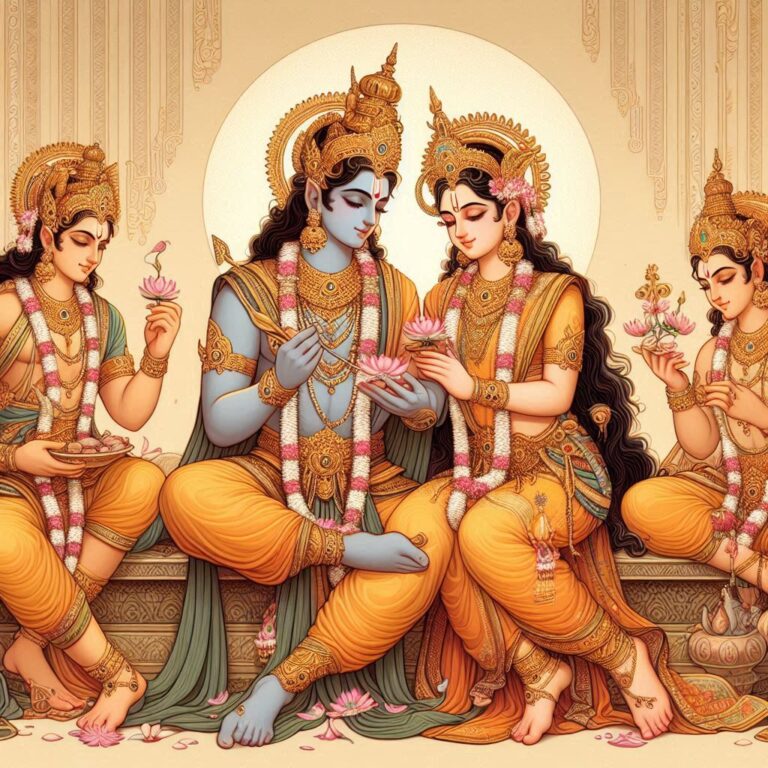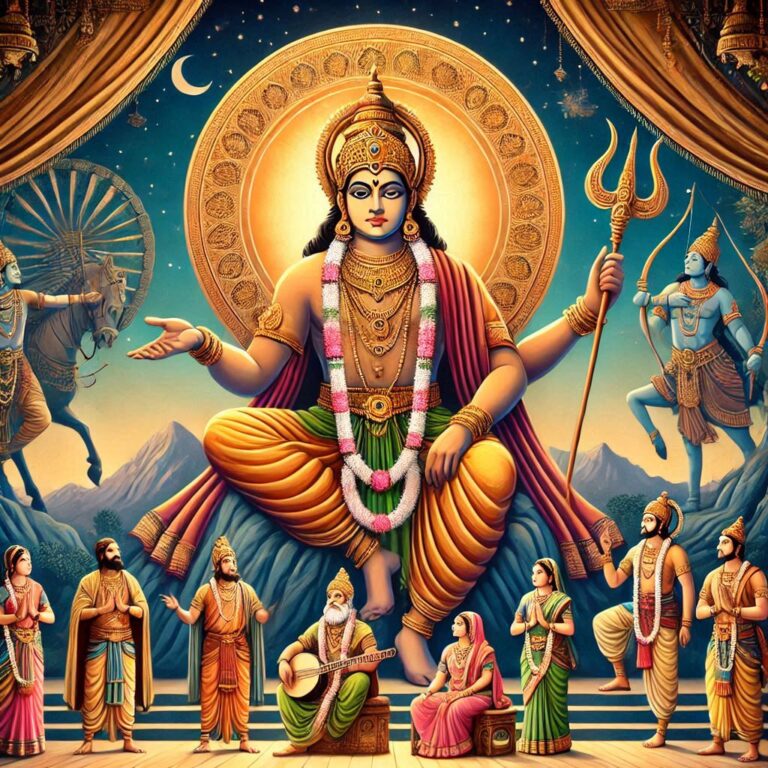Unveiling Sita’s Sons: Legacy and Lessons from Ramayana
Unveiling the Legacy of Sita’s Sons
The Indian epic, the Ramayana, is rich in history, drama, and profound lessons. Centuries ago, it portrayed the noble lives of its characters, yet one aspect often overshadowed is the tale of Sita’s sons: Lava and Kusha. These two boys didn’t just carry the legacy of their illustrious lineage but also imparted wisdom and resilience that continue to resonate in modern times. Have you ever wondered about their journey, their challenges, and what we can learn from them? Let’s dive deep into this captivating narrative while also unfolding the philosophical treasures encapsulated in their story.
The Story of Lava and Kusha: Roots in the Ramayana
Lava and Kusha were the sons of Rama, the Prince of Ayodhya, and his beloved wife, Sita. Their birth was steeped in emotional riches and cultural dynamics. After Sita’s exile due to doubts about her chastity, she took refuge in the hermitage of sage Valmiki. It was here, in the lap of nature, that she gave birth to the twins.
Birth Amidst Adversity
When Sita bore her children, she was undergoing tremendous emotional turmoil. The shadows of mistrust loomed large over her. Despite her trials, she raised Lava and Kusha with an unyielding spirit, imparting values of honor and integrity.
What’s remarkable is that their upbringing was founded upon the teachings from the very Ramayana that we cherish today. You might say they were forged in the fires of adversity – much like how diamonds are created!
Shloka on Resilience
To emphasize resilience, let’s consider this Shloka:
सुखदुःखेसमेकृत्य यः सथिथिष्णुर्वटी सदा।
(Sukhaduḥkhesamekṛtya yaḥ sthitiṣṇurvatī sadā.)
“He who remains steady in joy and sorrow is truly a person of wisdom.”
This reflects the strength that Sita imparted to her sons. It’s a reminder that life’s dualities are inevitable, and resilience is key!
The Adventures of Lava and Kusha
Growing up in Valmiki’s hermitage, Lava and Kusha not only learned to survive but to thrive. They were trained in martial arts, scriptures, and the art of storytelling, preparing them for their future. As children of the epic’s protagonists, they had large shoes to fill.
The Capture of the Ashwamedha Horse
Their journey takes an interesting turn when Lord Rama performed the Ashwamedha Yagna. As part of the ritual, a horse was set free, and it was their task to capture this horse—an act symbolizing power and dominance.
What happened next was nothing less than cinematic! They exhibited unparalleled prowess and captured the horse, unaware of their lineage. This unintentional act of bravery set the stage for them to confront their father, leading to an epic revelation.
Lessons from Lava and Kusha’s Life
So what can we learn from the lives of Lava and Kusha? Here’s where it gets intriguing! Their story shares wisdom that resonates through the ages.
Embracing Identity
Eventually, when the twins learned about their heritage, they embraced it with pride, but it wasn’t an easy path. This poses a crucial question: How often do we find ourselves grappling with our identity? Lava and Kusha teach us the importance of self-acceptance and understanding our roots.
Shloka on Identity
स्वधर्मे निधनं श्रेयः परधर्मो भयावहः।
(Svadharme nidhanaṃ śreyaḥ paradharmo bhayāvahaḥ.)
“It is better to die in one’s own duty than to follow the duty of another.”
This piece of wisdom sharply illustrates the significance of acknowledging and embracing one’s identity.
Against All Odds
The duality of strength and vulnerability characterizes their journey. Facing powerful adversaries and tremendous struggles, they stood firm, teaching us resilience.
Cultural Impact and Modern Relevance
The saga of Lava and Kusha extends beyond the pages of the Ramayana; their story has continuously influenced art, literature, and philosophy. Even in today’s world, the various adaptations we see echo their journeys, underscoring themes of bravery, familial ties, and moral dilemmas.
The Power of Storytelling
Their prowess in storytelling not only won the hearts of the citizens of Ayodhya but also ignited the imagination of countless generations.
How does this affect you? Think about it. Storytelling is a powerful medium! Like these twins, you have the capacity to influence thoughts and inspire others through your narratives.
Doha on Storytelling
कथा सुनय मन हर्षित कर।
(Kathā sunaya mana hṛṣṭa kara.)
“Hearing the tale, the heart blossoms with joy.”
This highlights the very essence of stories—they connect us.
The Legacy Continues
The legacy of Lava and Kusha reminds us to remain grounded in our values while navigating life’s complexities. As the sons of Sita and Rama, their journey is a metaphor for the struggle between society’s expectations and personal integrity.
Shloka on Legacy
यत्र योगेश्वरः कृष्णो यत्र पार्थो धनुर्धरः।
(Yatra yogeśvaraḥ kṛṣhṇo yatra pārthō dhanur-dharaḥ.)
“Wherever there is Lord Krishna, the master of yoga, and Arjuna, the wielder of the bow, there is victory.”
This Shloka underlines the partnership of values and perseverance, much like Lava and Kusha’s relationship with each other.
Conclusion
The story of Sita’s sons, Lava and Kusha, is not just a mere subplot in the grand narrative of the Ramayana; it’s a rich tapestry woven with lessons of resilience, identity, and familial bonds. They encapsulated the essence of courage and perseverance. As we embrace these teachings, let us remember that just like Lava and Kusha, we too can leave a legacy worth celebrating.
Their story encourages us to chase after our truths, understand our identities, and face life’s challenges with strength. Isn’t that what every great story—like this one—aims to do?
And hey, speaking about stories, don’t forget to share this one with your friends! Who knows? You might inspire someone!
FAQs
-
Who are Lava and Kusha in the Ramayana?
- Lava and Kusha are the twin sons of Sita and Lord Rama, born during Sita’s exile in Valmiki’s hermitage.
-
What significant event did Lava and Kusha initiate in the Ramayana?
- They captured the Ashwamedha horse during Rama’s Yagna, which led to a dramatic confrontation with their father, Lord Rama.
-
What lessons can we learn from Lava and Kusha’s upbringing?
- Their story teaches resilience, the importance of knowing one’s identity, and embracing one’s roots while facing adversity.
-
How does storytelling relate to Lava and Kusha?
- They were excellent storytellers, and their engaging narratives won them the respect of the citizens of Ayodhya, showcasing the power of storytelling.
-
How does Lava and Kusha’s legacy continue to influence modern culture?
- Their story echoes themes of bravery and moral integrity in various adaptations in literature, theater, and cinema, inspiring new generations.








